Lesen Sie diesen Artikel auf Deutsch / Read this article in German
—
What does mobility feel like when we experience it on foot? At the Women in Mobility (WiM) Walkshop at the International Association of Public Transport (UITP) Summit 2025 in Hamburg, we tried just that.
By combining a Maptionnaire digital community survey with an in-person walking tour, we evaluated how inclusive, safe, and intermodal the journey from A to B really is.
Here's what the participants observed, evaluated—and criticized.
This case study was guest-written by Maptionnaire user Itzel Garcia Mejia, from Women in Mobility Berlin and the Technical University of Berlin. Thank you, Itzel!
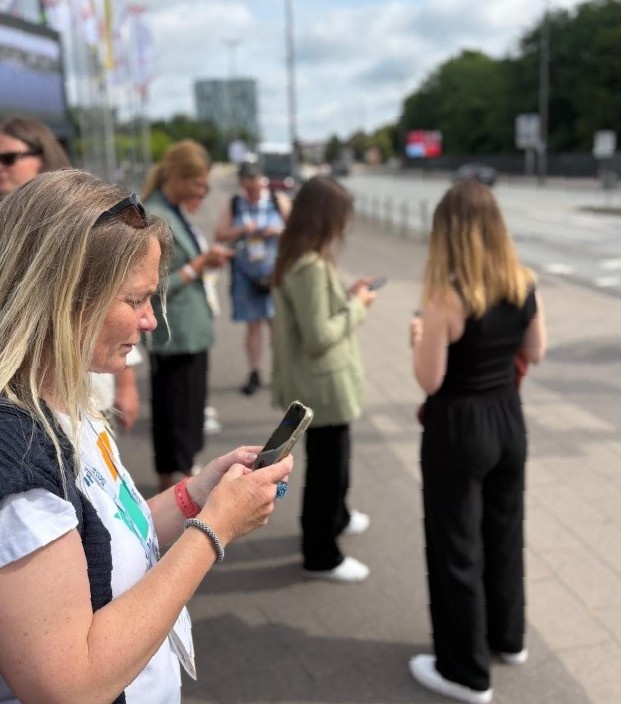
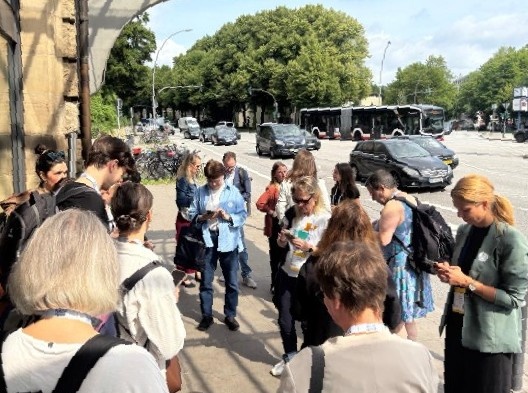
In June 2025, Hamburg became a hotspot for the international public transport scene. Women in Mobility participated in several activities at the UITP Summit, including an interactive walkshop—a workshop done while walking. At the walkshop, we wanted to find out how inclusive, connected, and accessible urban mobility in Hamburg really is.
Participants—mostly transportation experts, in this case—were invited to step into the shoes of everyday cyclists, pedestrians, and public transit users. We examined a specific route starting and ending at the Hamburg Messe, paying particular attention to the area surrounding two nearby train stations.
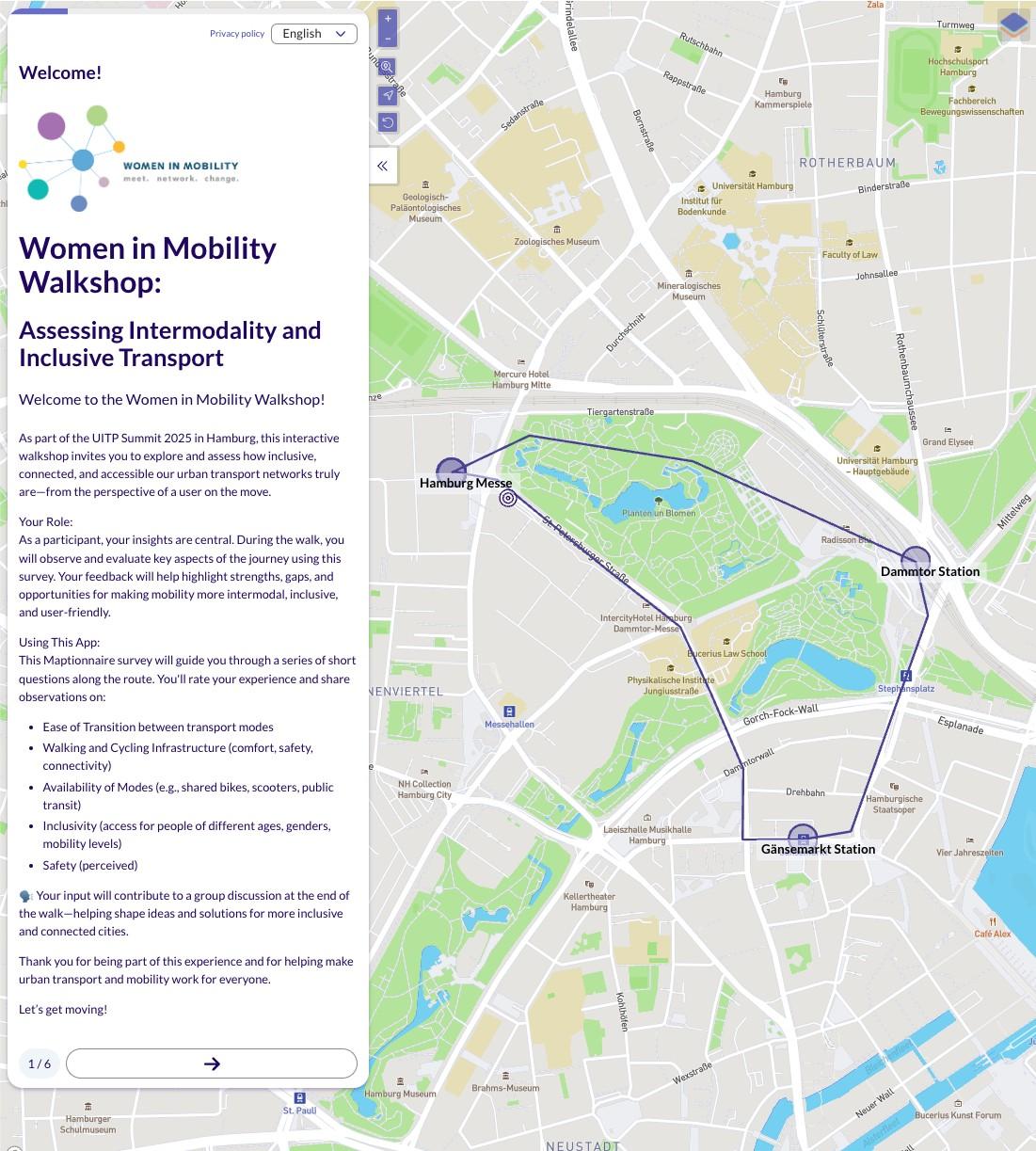
A Hybrid Approach: Walkshop + Online Survey
The walkshop's aim was to assess the intermodality and inclusivity of urban mobility, with a special focus on gender-sensitive perspectives. With the online survey open on their phones, participants followed the designated route and answered short questions on key aspects of the user experience:
- Transitions between different modes of transport
- Infrastructure for pedestrians and cyclists (comfort, safety, connectivity)
- Availability and accessibility of mobility services
- Inclusivity in terms of age, gender and mobility needs
- Perceived safety, or the subjective feeling of safety along the route
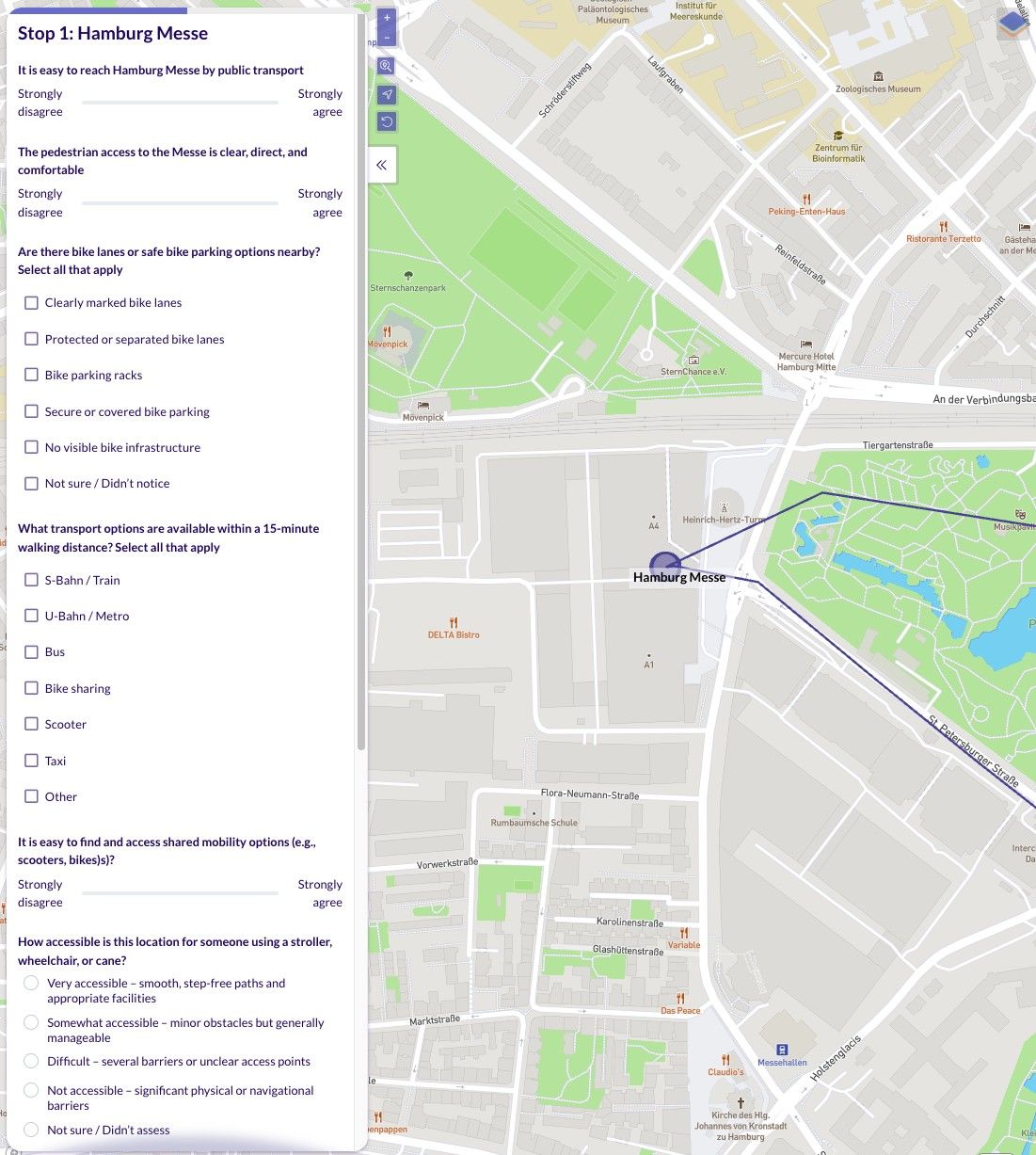
Participant Diversity Key for Inclusive Mobility
Metrics on demographics and social roles are crucial to inclusive mobility. They reveal how different groups experience transportation in diverse and unequal ways. Factors such as gender, age, disability status, income level, and caregiving responsibilities shape how people travel, the barriers they face, and the choices available to them.
The Maptionnaire survey responses give an overview of the walkshop's participants…
- Gender identity: 15 women, 3 men, 1 non-binary/third gender person, 1 person described themselves as a “free spirit”
- Age structure: between 18 and 64 years, most aged 25-44
- Mobility context: 14 do not regularly assist anyone with reduced mobility, 2 assist someone with reduced mobility, 5 regularly travel with children
…And an overview of their travel modes. The majority used sustainable means of transport:
- 6 by train (S-Bahn, regional or long-distance train)
- 10 by subway
- 1 by bus
- 3 by bike (own or shared)
- 1 with the e-scooter
- 5 on foot
- 2 by car
17 of 21 participants traveled by public transport—a strong signal in the spirit of the summit and a clear commitment to sustainable mobility.
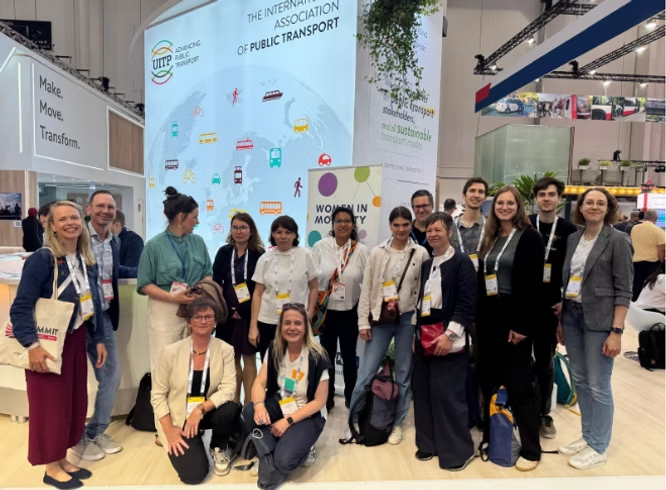
Results: Accessibility, Perceived Safety, Bike-Friendliness
In just one hour's time, participants examined mobility conditions on a clearly defined route in Hamburg and provided valuable, in-depth feedback. The feedback revealed both strengths—such as accessibility and the sense of safety—and the challenges, particularly in relation to cycling infrastructure.
- Accessibility and public transport: 13 out of 17 participants stated that the venue was easily or fairly easily accessible by public transport.
- Safety and comfort: A pleasing 92.7% of respondents felt safe walking during the day.
- Potential for improvement: Cycling infrastructure received constructive criticism. Participants highlighted that cycle paths were not clearly marked or separated, making cycling less intuitive and potentially less safe.
The results of the walkshop will be shared with the City of Hamburg and incorporated into the broader discussion on how to make urban mobility more inclusive and intermodal. A big thank you to everyone who joined us!

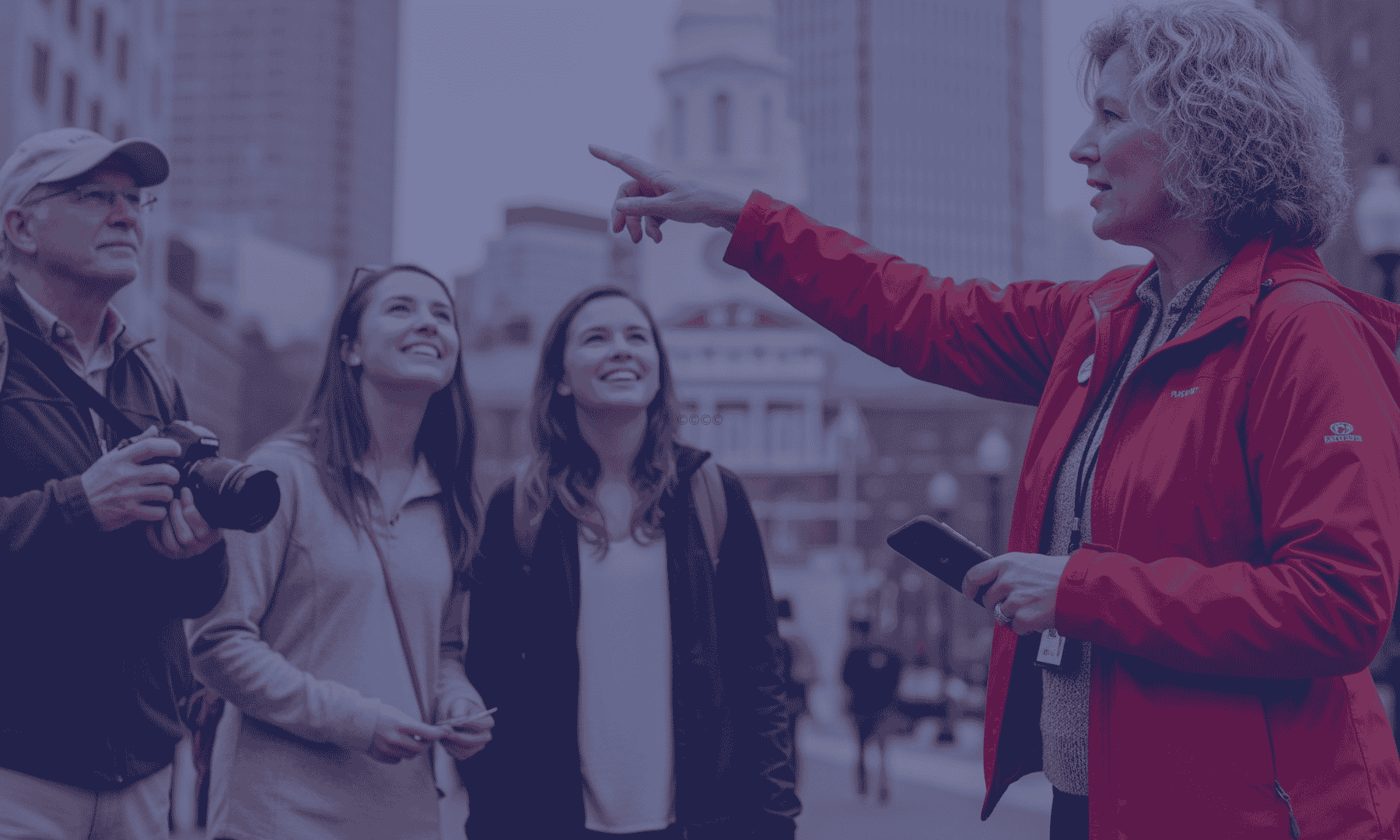





.jpeg)
.webp)

.webp)


.webp)
.png)















































